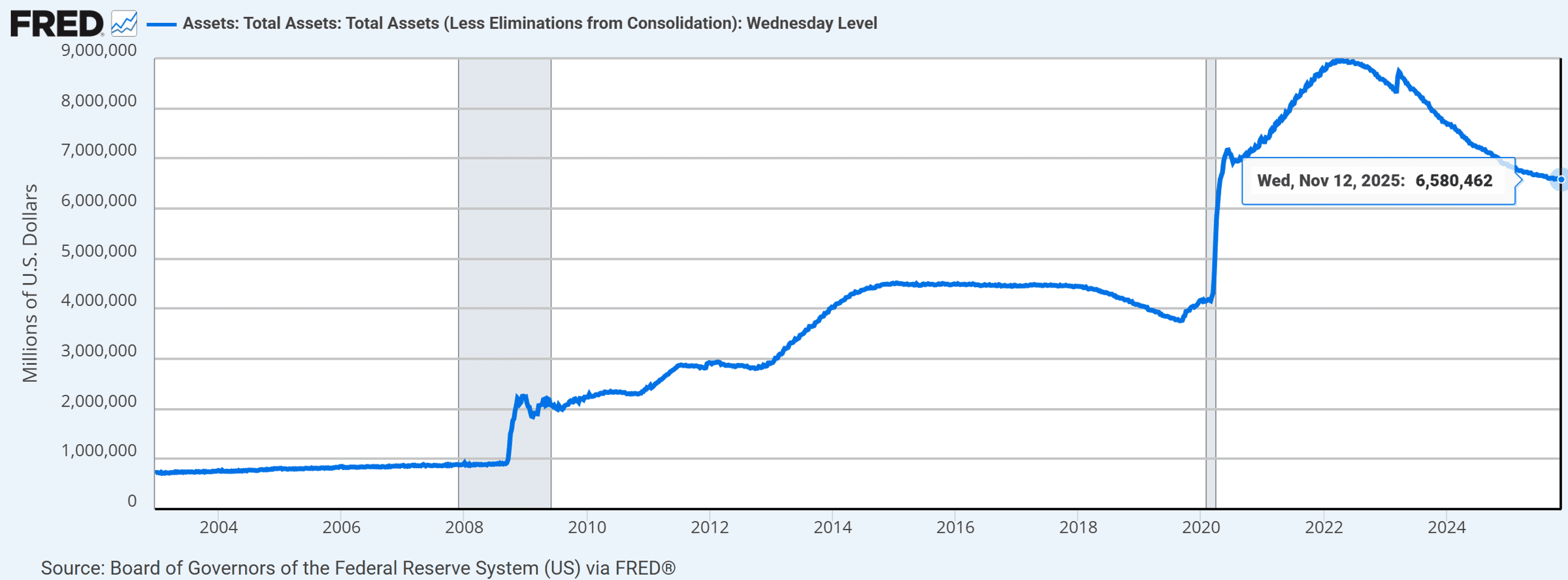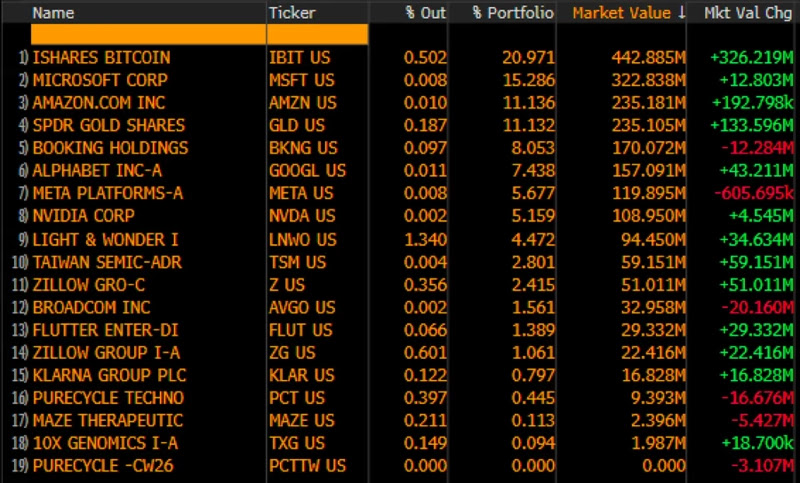Thanks for reading The BlockByte Weekly, where we summarise the key updates in crypto over the last week and provide our perspective on what you need to know as an investor.
Weekly Snapshot
- BTC: US $95,419 (-7.6%)
- ETH: US $3,178 (-7.5%)
- Crypto Market Cap: US $3.2T (-6.8%)
- Gold: US $4,082/oz (+2.7%)
- S&P 500: 6,734 (+0.1%)
- ASX 200: 8,634 (+1.4%)
Executive Summary
- Bitcoin is testing its upward trend support at US $95K, with the next major level at US $74,500. Many altcoins are now down more than 50% from all-time highs.
- Liquidity remains the dominant driver of markets, and conditions are expected to improve towards Q4 2025 and Q1 2026.
- Harvard University’s largest disclosed equity position is now a Bitcoin ETF worth more than US $443m.
- Risks remain, including stretched tech-sector valuations and signs of weakening labour-market conditions.
Key Stories This Week
The Technical Set-up - Are We Heading Lower?
Over the past week, crypto markets fell by 6.8%, Bitcoin is now 24% below its October 6th high of over US $126,000 and altcoins like Solana, Chainlink and Cardano have been cut in half with XRP down 42%. The question on many investors' minds is: are we in the beginning of a bear market?
From a technical standpoint, the next major line of Bitcoin price support (green line) sits all the way down at US $74,500 which is where Bitcoin fell to during the initial Trump-tariff announcements that sent markets across the world tumbling. In the months that followed we saw a swift recovery, and with the current pullback to ~US $95,000, Bitcoin is touching its upward support channel (black line). However, this doesn't provide any clues as to what will happen in the coming months and whether or not we will break lower or bounce off from these levels. We leave that work to the fortune-tellers.

Liquidity is Coming
In a recent interview, founder of BitMEX and the perpetual futures contract, Arthur Hayes, explains that crypto markets are poised for a stronger 2026 following the re-opening of the US government and liquidity re-entering into the US financial system. We recommend watching the first five and a half minutes.
We've touched on this in prior newsletters but given that liquidity is the most important factor driving both equity and crypto markets, it's worth reiterating exactly what's been going on over the last few weeks and months.
The US government's main income and spending account, also known as the TGA has risen to ~US $954B. This is above the ~US $600B average we've seen in the last 3-4 years, but below the peak seen during the COVID-19 liquidity bubble where trillions in excess dollars were printed by the Fed to support businesses and individuals out of work.

When the TGA spikes, that's money coming into the government's account from tax receipts, tariffs and the Fed purchasing bonds. When the TGA balance falls, that's money leaving the government's account and entering into the economy (wages, spending programs, health, education, military etc.).
The reason for the TGA spiking up again this time around is partly due to the normal cyclical nature of tax receipts from both corporates and individuals being paid around September. However, with the US government having been shutdown for 43 days, more than 1.4 million federal employees went without pay. Not only that, but an estimated US $50B of spending programs were put on hold, and government grants, food-stamp subsidies and loans to small businesses were withheld.
While it's hard to know the precise amount, estimates are that over the coming weeks, the backpayments to federal employees and resumption of spending programs will see US $200-$300B of liquidity move back into the US economy. Wage backpayments will be completed by Wednesday 19th November. This means more money into the pockets of people and businesses - which means more money to invest in things like Bitcoin, Ethereum, XRP and whatever your favourite colour of liquidity sponge is.
The other major driver of liquidity long-term is the Federal Reserve's balance sheet. The Fed has the magic button to create new dollars. When the Fed's balance is expanding, that means they are printing more money to buy bonds or provide loans through the repo facility.
When the Fed's balance sheet is going down, as it has been since April 2022, it means that the Fed is undertaking quantitative tightening (QT). In simple terms, during QT, the Fed doesn't reinvest money into buying new treasuries, letting the existing treasuries mature and run off the balance sheet.

From December 1st, the Federal Reserve has said that it plans to end its quantitative tightening program, and may in fact look at purchasing more treasuries which would be stimulatory to market conditions.
With these factors in mind, from our perspective, we don't foresee this current pullback as the beginning of a bear market - but instead a correction created by a temporary lack of liquidity and elevated risk-off sentiment.
Institutions Are Doubling Down
Harvard University’s US $55bn endowment disclosed a US $443m stake in BlackRock’s iShares Bitcoin Trust (IBIT) in its latest 13F filing - more than tripling the number of shares it owned since last quarter. The position represents over 20% of its US-listed public equity holdings, making IBIT its single largest disclosed public-market investment. The filing shows Harvard held 6.8m shares as of Q3 2025, placing it among the ETF’s top institutional holders.

Risks Remain in Tech Valuations & US Labour Market
Despite some of the potential upside from incoming liquidity, it's worth acknowledging market risks too. US equities logged their steepest drop in over a month as traders dialled back bets on a December Federal Reserve rate cut. In addition, investors are worried that some of the economic data including labour statistics that was missed for the month of October due to the government shutdown may be worse than anticipated. Privately released payroll data for October revealed over 11,000 job cuts per week on average.
Until next week,
James
James Brannan
Managing Director
BlockByte
.png)
.png)